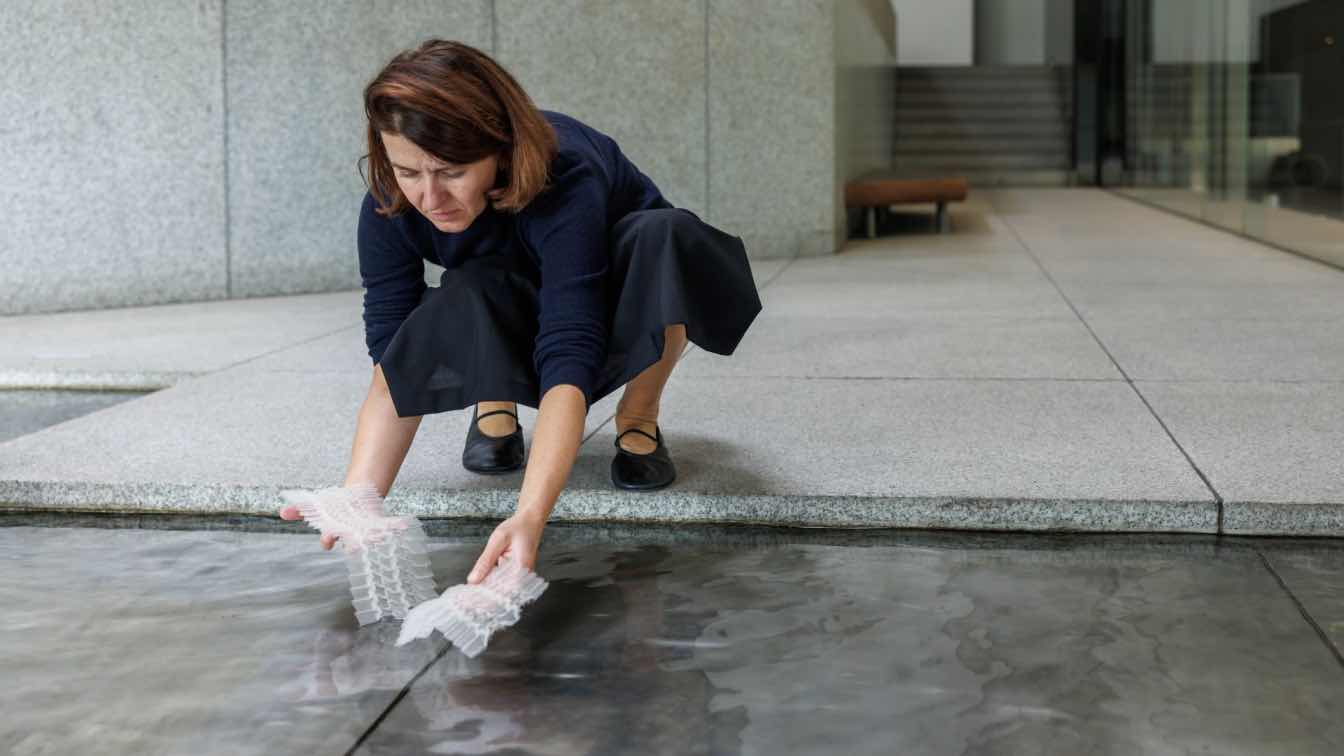This November, magical sounds will bloom in the extraordinary stone garden "Tengoku" ("Heaven") belonging to the Sogetsu Foundation. This will be possible thanks to the latest artistic project by Katarzyna Krakowiak-Bałka, titled "Keeping flowers alive. Acoustic ikebana".
Full of meaning, forms, and sounds, Katarzyna Krakowiak-Bałka's "acoustic ikebana" is the result of a collaboration between the artist, the Adam Mickiewicz Institute, and Zachęta National Gallery of Art in Warsaw, with the support of the Polish Institute in Tokyo. It can be viewed from November 8th to 20th, 2024, in the stone garden belonging to the Sogetsu Foundation, designed by world-renowned artist Isamu Noguchi. The project "Keeping flowers alive. Acoustic ikebana" will be inaugurated with a three-day cycle of concerts and performances on November 8th, 9th, and 10th.
Rebels of Ikebana
Katarzyna Krakowiak-Bałka's installation combines a multitude of forms into an artistic, incredibly complex whole, full of meaning and prompting reflection. There are sounds, but also architectural space, nature, and fabric, intertwined in a conceptual work of art that engages all the senses. Why did the author call it "acoustic ikebana"? The Sogetsu Foundation cultivates the tradition and disseminates knowledge about the Sogetsu school of ikebana. Founded in 1927 by Sofu Teshigahara, the school questioned the then-existing tradition of ikebana, recognizing the superiority of individual, unconstrained artistic expression. The Polish artist, who is also a passionate gardener, found inspiration in Japanese cultural heritage and discovered the beauty of floral compositions over a decade ago.
Between Emptiness and Sound
Every day in "Tengoku", ikebana demonstrations, exhibitions, and artistic events take place. However, during November, Katarzyna Krakowiak-Bałka's electroacoustic installation will create a completely new space in the Japanese stone garden. The heart of the installation "Keeping flowers alive. Acoustic ikebana" will be a red spider lily – Lycoris radiata – a flower endowed with many meanings in Japanese culture. Its toxic properties, combined with its striking appearance, create tension between pure beauty and the danger lurking behind it. An integral part of the installation will be sounds emitted from speakers placed in the garden, utilizing its shape and the elements within it, such as water. The sounds are an artistic vision of the shape of plants and natural sounds. At the same time, the artist uses contact microphones to amplify subtle, usually inaudible sounds of flowers. The space of the garden, serving as a backdrop for the electroacoustic composition, will be further transformed with the help of artisan-produced pleated fabric that will react to the acoustics of the surroundings. As a result, a dynamic, tension-filled place will be created where sound neighbors silence and form neighbors emptiness. Sogetsu ikebana masters claim that its essence lies not in the flowers themselves, but in the emptiness between them. Inspired by this idea, Katarzyna Krakowiak-Bałka's art installation reflects the spirit of ikebana. The artist proves that modern technology and the natural world can coexist. Moreover, drawing from each other, they are able to create new values. Values that not only pay homage to the tradition of the Sogetsu school but also to the beauty of life encapsulated in flowers. Katarzyna Krakowiak-Bałka's installation provides sensory experiences that encourage engagement with the invisible rhythms of nature. But it also reminds us of the need to nurture and protect it.
Katarzyna Krakowiak-Bałka
Katarzyna Krakowiak-Bałka is an artist creating sculptures, performances, spatial objects, and sound installations. She holds a PhD from the Academy of Fine Arts in Warsaw and a habilitation from the Academy of Fine Arts in Gdańsk. Her work allows viewers/listeners to become an integral part of the artwork and experience architecture through sound. She constructs large-scale installations based on existing structures.
Katarzyna Krakowiak-Bałka has been honoured with numerous awards granted by institutions such as St. John's College at the University of Oxford, the Polish Ministry of Science and Higher Education, the Polish Ministry of Culture and National Heritage, and the American Trust for Mutual Education. In 2012, she received a special award for the exhibition "Making the Walls Quake as if They Were Dilated with the Secret Knowledge of Great Power" (curator: Michał Libera) at the Polish Pavilion of the 13th Venice Architecture Biennale. In 2020, she created the work "It Begins with One Word. Choose Your Own" in the Barcelona pavilion designed by Ludwig Mies van der Rohe. In 2023, a concert took place as part of the "Where does any Miracle start?" project at Jeu de Paume, which included a sound installation and an online function, demonstrating the artist's interest in the acoustics of architecture at its intersection with living organisms. Between 2019 and 2022, she ran the Sound Space Workshop at the Academy of Fine Arts in Warsaw, and since 2022, she has co-run the Interfaculty Workshop of Actions, which she leads together with Professor Mirosław Bałka. She lives and works in Otwock and Oliva in Spain. She also identifies as a gardener, daily tuning into the soil and plants and learning from them.
Project Organizer: Adam Mickiewicz Institute
Collaboration: Kiri Teshigahara, Artistic Director of Sogetsu Foundation
Partners: Zachęta National Gallery of Art, EIDOTECH Polska, Plissé Lognon, workshop of Maison Lemarié, SORA BOTANICAL GARDEN Project, Timmpi
Curators: Paweł Pachciarek, Miki Kaneda
Singers: Isabelle Duthoit, Michał Sławecki, Asthma, Yuusari
Performers: Hikaru Kawasaki, KAi MiWA
Costume design: Anna Zeman, Tomasz Armada
Acoustic supervision: Albert Karch
Technological collaboration: archAKUSTIK, Professor Andrzej Kłosak
Visual identity: Renata Motyka






















































